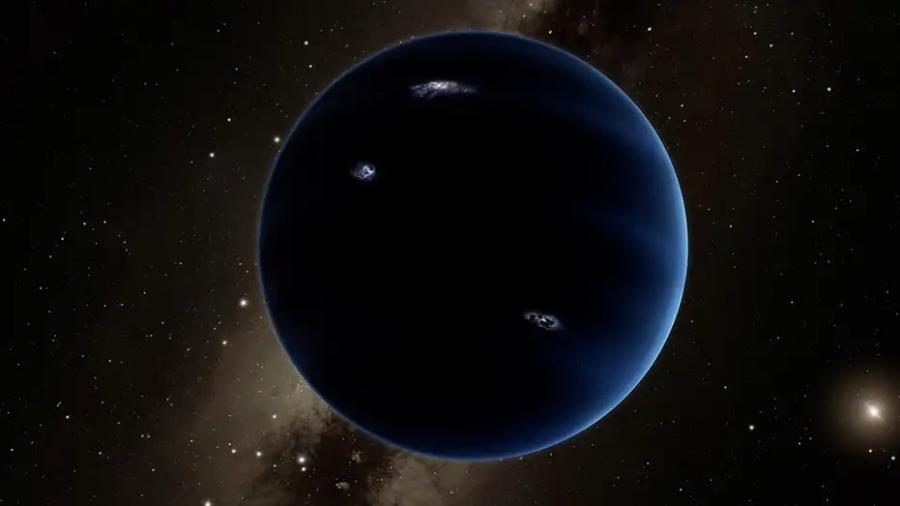Did you know that astronomers are on a tireless search for a mysterious Planet Nine hidden somewhere in the solar system? In the darkness beyond Neptune, scientists believe there exists a gas giant, an indecipherable presence that challenges our understanding of the cosmos.
Evidence of Planet Nine has captured the imagination of scientists for years, generating a number of theories and assumptions. Although its existence has not yet been confirmed, the evidence for its presence is so compelling that many astronomers are convinced it is only a matter of time before we discover it.
In this in-depth analysis, we'll explore the evidence accumulated to date, from the orbital irregularities of Kuiper Belt objects to the mathematical calculations of their possible location. We'll also consider the various scientific theories about the nature of this hidden planet, its origin, and its possible impact on our understanding of the solar system.
In addition, we'll delve into the ongoing efforts to locate Planet Nine. We'll meet the astronomers and space missions dedicated to unraveling this cosmic mystery, and explore the techniques and technologies used in this extraordinary search.
Prepárate para un viaje fascinante a los confines de nuestro sistema solar, donde los enigmas aún predominan y el Planeta Nueve sigue siendo una pregunta pendiente. Con suerte, este enigma cósmico despertará tu curiosidad y te inspirará a seguir indagando en los misterios que el universo sigue guardando para nosotros. 🌌🔭
The Mystery of Planet Nine: Clues and Observations
In the vast cosmos of the solar system, the mystery of Planet Nine persists, and as the years pass, astronomers continue their relentless search to discover this hidden star. The evidence for Planet Nine's existence is indirect but compelling. It is the culmination of meticulous astronomical observations and mathematical analysis.
Observations of unusual orbits
The strongest evidence for the existence of Planet Nine comes from the unusual orbits of extreme trans-Neptunian objects (ETNOs). Astronomers have observed that ETNOs follow extremely elongated elliptical paths, and their closest approach points to the sun are clustered in a specific direction. This peculiar phenomenon is difficult to explain without the presence of a distant, massive planet exerting its gravitational influence.
Computer simulations
In addition to direct observations, scientists have also conducted a series of computer simulations to predict the location and mass of Planet Nine. These simulations indicate that Planet Nine could be approximately 10 times the mass of Earth and orbit the sun once every 10,000 to 20,000 years.
The challenge of searching for Planet Nine
The search for Planet Nine is a challenging task. Its possible location at the edge of the solar system makes it a difficult object to detect with current technology.

The problem of distance
Planet Nine is estimated to be located at a distance of between 600 and 800 astronomical units (AU) from the sun. At this enormous distance, sunlight is very faint, making the planet extremely difficult to detect.
Limits of current technology
Although current telescopes are capable of observing very distant objects, there is a limit to what they can detect. Even the most powerful telescopes may struggle to detect an object the size of Planet Nine at such a great distance.
Proposed methods for finding Planet Nine
Despite the challenges, astronomers have proposed several methods to search for Planet Nine.
Use of wide-field telescopes
Since the exact location of Planet Nine is unknown, astronomers have suggested using wide-field telescopes to scan large areas of the sky in search of this elusive star.
Study of gravitational disturbances
Another proposed approach is to study the gravitational perturbations that Planet Nine might cause on other objects in the solar system. For example, if Planet Nine exists, it should affect the orbits of dwarf planets and ETNOs.
The importance of finding Planet Nine
The discovery of Planet Nine could have significant implications for our understanding of the solar system.
Solving the mystery of ETNO orbits
The existence of Planet Nine would explain the unusual orbits of ETNOs, solving a long-standing mystery in astronomy.
Refining our understanding of the solar system
The discovery of Planet Nine could also help astronomers better understand the formation and evolution of the solar system. For example, it could provide clues about how the giant planets formed and how the solar system reorganized in its early days.
In short, Planet Nine remains an enigma, but the quest to unravel this mystery continues. As astronomers refine their methods and improve their technologies, we may soon discover this hidden star in the depths of our solar system.
Conclusion

In short, the search for the mysterious Planet Nine continues to challenge astronomers in their quest to unravel the mysteries of the solar system. The existence of this hidden star, although still unconfirmed, has become a fascinating subject of study. Its supposedly perceptible gravitational effects, and the anomalies in the orbits of Kuiper Belt objects, point to the presence of this ice giant.
This fascinating astronomical journey has allowed scientists to explore the frontiers of our solar system and break new ground in our understanding of the universe. However, despite technological advances, Planet Nine remains elusive, hidden in the vastness of space.
The search for Planet Nine reminds us how much remains to be discovered in our own solar system. It's a quest that tests our ability to confront the unknown and drives us to continue exploring, learning, and discovering. This hidden, yet elusive, star is transforming our perception of the solar system and expanding the boundaries of our astronomical knowledge.
The search for Planet Nine is ultimately a story of mystery, discovery, and exploration that invites us to look beyond the known and dream of what remains to be discovered in the stars.



